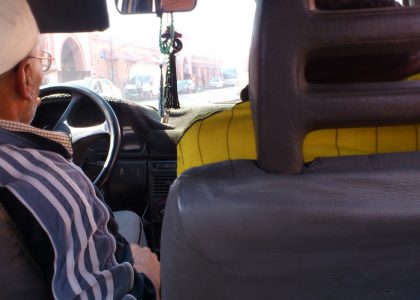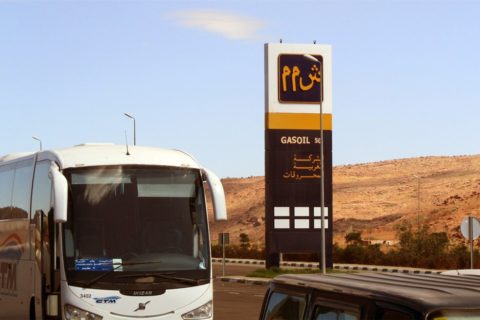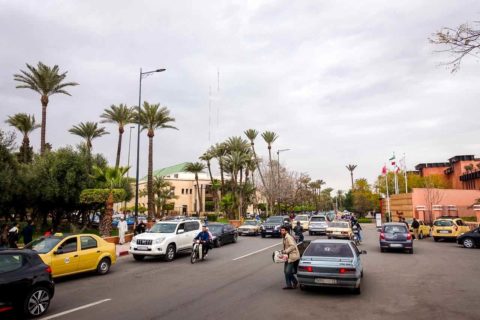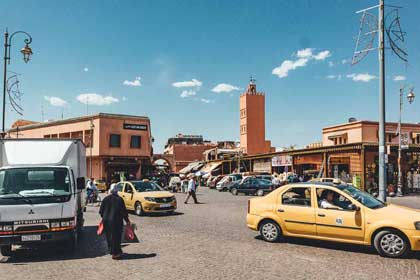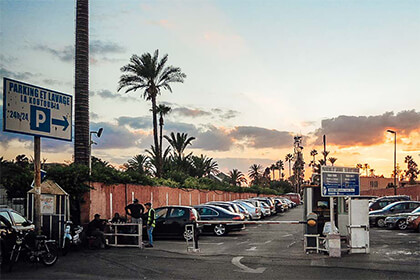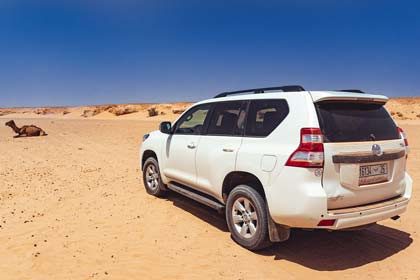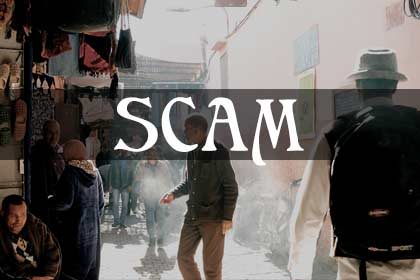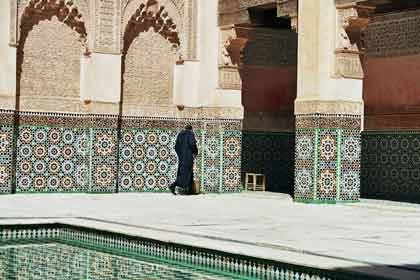This article will discuss transportation and navigating public transit in Morocco. I will give you an overview of the Moroccan transportation network and provide you with insights, tips, and first-hand experiences of the different modes of transport.
Morocco has a well-developed transportation system, making it easy and affordable to reach most places by public transport. The more remote your destination, the more challenging the journey can become. Each city offers a range of long-distance bus services and an extensive network of shared taxis (Grand Taxis), providing reliable connections between locations. Additionally, the train network stretches from Northern Morocco to Marrakech, offering a reliable and fast option for covering long distances between larger cities.
But it’s not always possible to complete all round trips using traditional public transport within a tight timeframe. In these situations, your own vehicle can be a quicker alternative, allowing you to effortlessly make side trips to remote places off the beaten path.
Contents
Urban transport in Morocco
If you’re staying in accommodation within the Medina in Morocco, you can comfortably explore most of the attractions on foot, as almost all Medinas in Morocco are car-free.
For longer trips or transfers between your hotel and the Medina, Petit Taxis are the best option. These small taxis are perfect for city rides and can accommodate up to three people. They are typically affordable and equipped with a taximeter. Make sure the driver turns it on. After 8 PM, expect a higher rate. If you’re traveling alone, it’s usual for the driver to pick up other passengers along the way.
Grand Taxis also operate within cities, but they don’t have taximeters, so you’ll have to negotiate the price before the journey. These taxis can also travel beyond the city limits, for instance, to the airport or to other cities.
Very few tourists use the super-cheap city buses, as taxis are quite affordable, and the bus network in larger cities like Marrakech or Rabat can often be confusing. If you do decide to take the bus, don’t hesitate to ask locals for help at bus stops. Moroccans are typically very helpful and often appreciate tourists taking the city bus. Plus, riding the bus can be a great opportunity to start a conversation with the locals.
Modern tram systems are available in some cities, such as Rabat, Salé, and Casablanca.
In tourist centers like Marrakech, you can also use horse-drawn carriages for transportation. While these offer an exciting perspective of the city, they can be time-consuming and impractical for getting around efficiently. Tourists mainly use horse-drawn carriages for recreation, and there are also growing concerns regarding animal welfare.
Traveling in Morocco by public transport
Trains in Morocco
In Northern Morocco, an extensive railway network connects several cities over a total length of 4225 km. The tracks extend southwards to Marrakech, offering an extremely convenient, reliable, and comfortable travel option. However, the limited rail network isn’t ideal for round trips, though it works perfectly for direct routes, such as the popular journey from Marrakech to Casablanca.
In terms of cost, second-class train prices are slightly more expensive (just over 3 DH per 10 km) than comparable bus fares. That said, first-class fares, which offer air conditioning and additional comfort, are noticeably more expensive, but still acceptable.
Morocco’s first high-speed route opened in 2018. The Moroccan TGV reaches speeds of up to 320 km/h, enabling the journey from Tangier to Casablanca in just two hours and ten minutes. For comparison, the same distance takes up to five hours with regular trains. The high-speed network connects the major cities in Northern Morocco, including Tangier, Kenitra, Rabat, and Casablanca.
In addition to regular and high-speed trains, there is also a night train between various cities.
You can find timetables and tickets for the Moroccan railway at all main train stations and on the ONCF website.
Buses in Morocco
When it comes to budget-friendly travel options, Morocco’s efficient bus system is even more economical than the train, covering extensive parts of the country. Numerous long-distance buses connect different cities and are generally cheaper than train rides or Grand Taxis. You can roughly calculate an average of 2-3 DH per 10 km.
Sometimes, the buses of smaller companies wait until they are fully occupied before they start their journey. On the way, they will occasionally stop to pick up additional passengers who signal by hand that they want to board. Most buses allow you to store your backpacks in the luggage compartment for a small fee when you drop off your luggage.
For the fastest and most reliable service, consider the state-owned bus company CTM buses and the Supratours buses, which the railway company operates. They have fixed departure times, offer luggage check-in, have numbered seats, and sometimes even show movies on longer routes.
In all larger Moroccan cities, you will find a bus station called “Gare Routière” where conventional long-distance buses depart. However, CTM and Supratours buses usually leave from their own offices, which are often not in the immediate vicinity of the bus station.
For longer trips or less frequented routes, I recommend purchasing tickets from Supratours or CTM 1-2 days in advance.
Although taking a night bus might seem like a way to save overnight costs, I wouldn’t recommend it. I’ve tried this myself in the past, but firstly, a ten-hour bus ride is no substitute for a good night’s sleep. Secondly, the risk of accidents increases at night, and you miss out on the fascinating landscapes you’d otherwise see during the day.
Grand Taxis
For a faster, though slightly more expensive option than buses, the so-called “Grand Taxis” are a popular choice. These are usually converted Peugeot or Mercedes sedans that can transport up to six passengers.
Every location hosts unique stops for Grand Taxis, often found near the bus stations. They charge fixed prices per seat depending on the route. The trip starts as soon as passengers occupy all six places. You can also share the costs of any vacant seats with your fellow passengers.
If you are traveling with a group of six people, Grand Taxis offer a flexible and spontaneous way to get around. You can rent the entire vehicle and, with a little negotiation and a small fee, arrange for stopovers or alternative routes.
Driving in Morocco
Renting a car is a great way to explore, especially if you want to travel to Southern Morocco where public transportation, such as buses, is not as common as in the north.
In general, the roads in Morocco are well-maintained and traffic is comparatively relaxed outside of urban centers. However, unnecessary accidents occur frequently in villages and cities as people often cross the road carelessly. So always be prepared for inattentive pedestrians, cyclists, and donkey carts that can appear unexpectedly. Be particularly cautious at night, as many non-motorized road users are on the move without proper lighting.
Another significant difference is the strong police presence throughout Morocco. Police checkpoints are common on main roads. If you encounter a Gendarmerie Royale control station, wait for the officers to signal before proceeding. Additionally, speed controls and radar cameras are widespread, so be mindful of speed limits in Morocco.
Traffic signs in Morocco are generally similar to those in Europe. Note, however, that alcohol consumption while driving is strictly prohibited.
Furthermore, there are plenty of gas stations in urban areas, but they become less frequent in rural areas and in the south. In these cases, I recommend using a navigation application like OMAnd or a road map to locate nearby gas stations. Gasoline prices in Morocco are comparable to the European average.
If you intend to drive on dirt roads, remote tracks, or into desert areas, you will need a four-wheel-drive vehicle and some driving experience. Renting a car without all-wheel-drive for such routes is not recommended and is often not permitted.
Domestic flights in Morocco
Royal Air Maroc (RAM) offers convenient flights connecting Casablanca to major Moroccan cities. However, when deciding on domestic flights, you should consider the environmental impact of these flights. You can usually cover the same distances by train, bus, or Grand Taxi.
For long and time-consuming routes, such as from Casablanca to Dakhla, Errachidia, Guelmim, Ouarzazate, or Zagora, it’s wise to consider domestic flights. Moreover, booking a flight to Casablanca at the end of your trip can make sense if your return flight home departs from there.
You can book domestic flights and find more information on the Royal Air Maroc website. Keep in mind that flight schedules may occasionally change, and Royal Air Maroc sometimes cancels or overbooks flights.
It is therefore advisable to confirm booked domestic flights at least 72 hours before departure.
Average travel times with public transport in Morocco
Here are the average travel times by public transport for some of the most common routes across Morocco.
Casablanca – Marrakech
- 3 hrs (train)
- 3½ hrs (CTM bus)
- 2½ hrs (Grand Taxi)
Casablanca – Agadir
- 9 hrs (bus)
Marrakech – Agadir
- 3½ hrs (bus)
Tangier – Casablanca
- 5-6 hrs (train/bus)
- 2 hrs (TGV)
Casablanca – Fès
- 4¼ hrs (train)
- 5½ hrs (bus)
- 3 hrs (Grand Taxi)
Casablanca – Essaouira
- 5 hrs (bus)
Marrakech – Essaouira
- 3½ hrs (bus)
Conclusion on transport in Morocco
Morocco offers a wealth of transport options to explore this fascinating country. Whether you want to experience the historic cities and beautiful countryside, or are interested in adventures in remote regions, there’s always a public transportation option to get you to your destination. The well-developed railway and bus infrastructure as well as taxis and rental cars offer flexibility and comfort. And while domestic flights can occasionally be a time-saving option, you should choose them wisely for environmental reasons.

